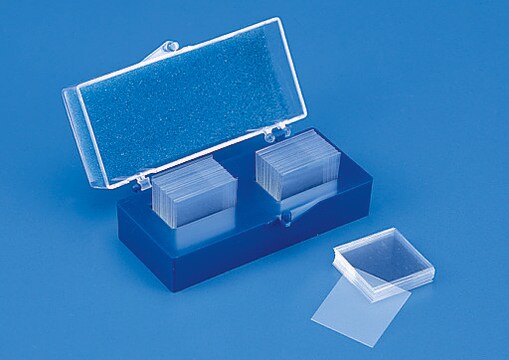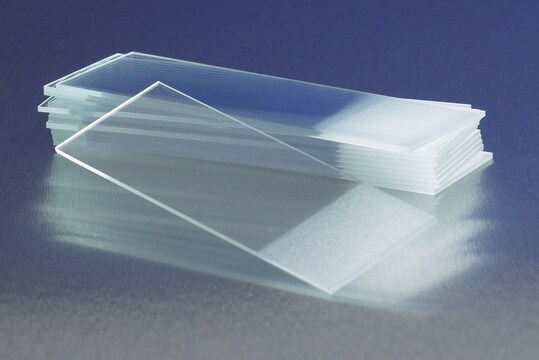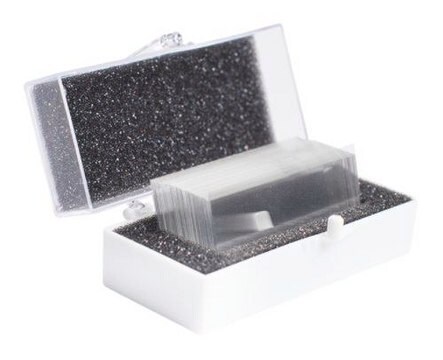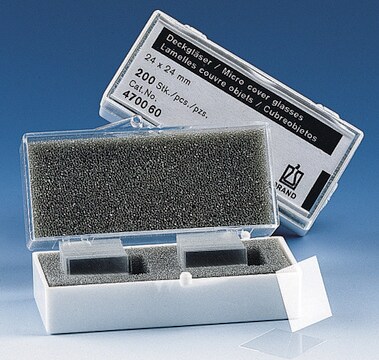643289
Gold coated glass cover slip
99.999% (Au), diam. × thickness 15 mm × 130-170 μm, layer thickness 100 Å
About This Item
Recommended Products
Assay
99.99% (Ti)
99.999% (Au)
diam. × thickness
15 mm × 130-170 μm
layer thickness
100 Å
refractive index
n20/589.3 1.523
matrix attachment
Titanium, as adhesion layer used to bind the gold to the borosilicate glass cover slip
SMILES string
[Au]
InChI
1S/Au
InChI key
PCHJSUWPFVWCPO-UHFFFAOYSA-N
Looking for similar products? Visit Product Comparison Guide
Related Categories
Features and Benefits
Other Notes
Legal Information
Choose from one of the most recent versions:
Already Own This Product?
Find documentation for the products that you have recently purchased in the Document Library.
Articles
1-Adamantanethiol (1-AD), an example in this spectrum of molecules with distinct chemical and physical properties, forms self-assembled monolayers (SAMs) on Au{111} that are displaceable when exposed to other thiolated molecules from solution, vapor, or contact due to weak intermolecular interactions in 1-AD SAMs.
Hybrid organic-inorganic sol-gel materials containing silica were first called “ORMOSILs” in 1984.
Our team of scientists has experience in all areas of research including Life Science, Material Science, Chemical Synthesis, Chromatography, Analytical and many others.
Contact Technical Service



